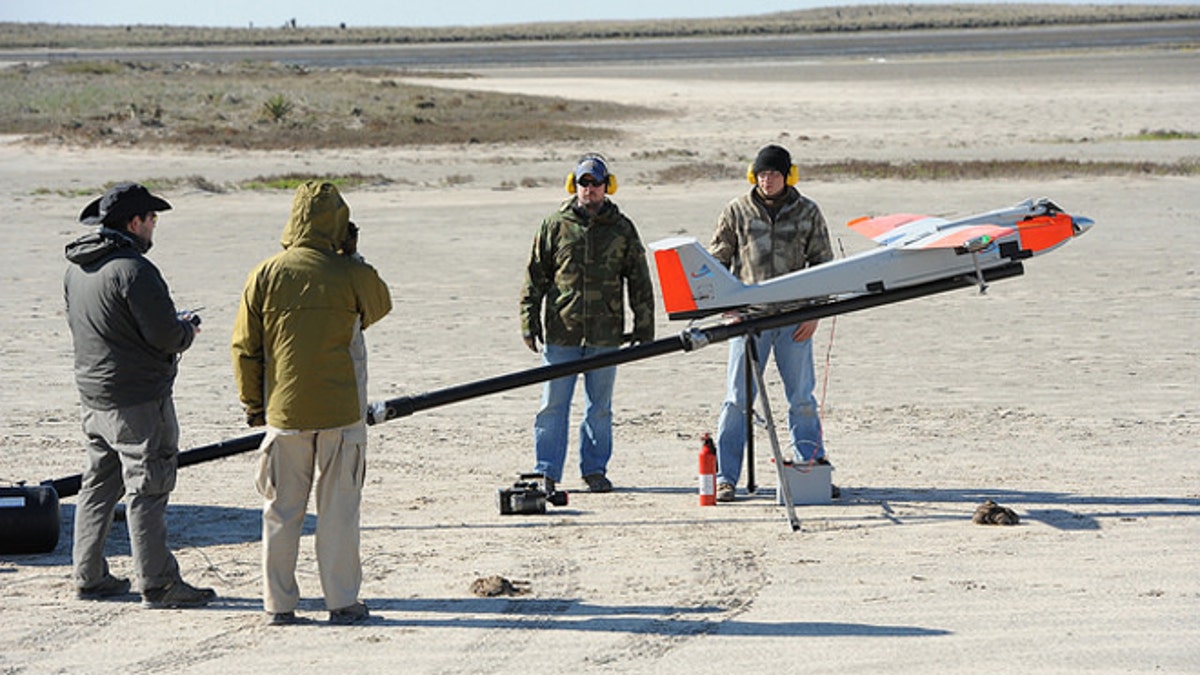
(Photo: Lone Star Unmanned Aircraft Systems Center at Texas A&M University-Corpus Christi)
The skies over South Texas are about to get a lot more crowded after drone researchers at a Texas university were granted more airspace to test and fly their unmanned aircraft.
The Federal Aviation Administration recently approved a new range for the Lone Star Unmanned Aircraft Systems Center at Texas A&M University-Corpus Christi, providing the researchers with around 290 flying days a year over mountains, high deserts, agriculture, coastal and maritime topographies, including the Gulf of Mexico and other virtually unpopulated regions.
“South Texas meets a lot of the criteria for the FAA,” Ron George, the senior research development officer at Texas A&M-Corpus Christi told Fox News Latino. “It’s sparsely populated, it’s got a lot of different geographical features … and one of the criteria for the FAA is a lot of diversity in geographical features.”
Texas is among six states designated by the FAA to develop test sites for drones, and the university has a number of sites throughout the state. The testing is seen as a critical step in a blossoming industry that could be worth billions of dollars and result in thousands of unmanned aircraft working in commercial and research applications.
“The industry is demanding that drones are allowed in the air for business purposes,” George said. “Oil and gas companies want to survey their pipelines ... agriculture wants to use unmanned aircraft as well.”
The Texas A&M center provides data to the FAA, the agency that develops the rules, processes and procedures required to safely operate UAS, commonly called drones, in the national airspace. Since the site designation in December of last year, the Lone Star Center has received inquiries from more than 60 private companies and other organizations that want to test and research aircraft, software or other possible uses for unmanned aircraft.
In 2012, Congress passed legislation directing the FAA to integrate unmanned aerial systems into the nation's airspace by 2015. The test sites, like the one in South Texas, are the FAA's way of gathering data to deal with privacy and safety issues, like how to keep the drones from flying into other objects.
The military and some law enforcement agencies already employ the devices, but the FAA doesn't currently allow commercial use of drones. While the FAA is working to develop the guidelines for use by the end of 2015, officials concede the project may take longer. The agency projects some 7,500 commercial drones could be aloft within five years of getting widespread access to the skies above America.
Texas is also one of the front lines for military and law enforcement drone use, as the Department of Homeland Security and Immigration and Customs Enforcement uses drones to patrol for undocumented immigrants and drug traffickers illegally crossing the border between the Lone Star state and Mexico. The federal government also uses Texas as a jump-off point for drones used in drug interdictions throughout the Caribbean.
Texas Gov. Rick Perry has called on the administration of President Barack Obama saying it needs to get much tougher on the U.S.-Mexico border by putting more drones in the air to secure it.
The use of drones along the U.S. borders with Canada and Mexico began several years ago. The U.S. Customs and Border Protection currently has eight Predators in the skies along the northern and southern borders with an additional two drones patrolling the Caribbean.
The drones don't currently carry weapons, just high-tech cameras used for surveillance purposes. But critics of the use of drones for border security point to agency statistics to show the machines are not cost-effective because they lead to a relatively small number of migrant arrests and drug seizures.
